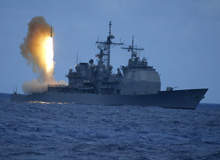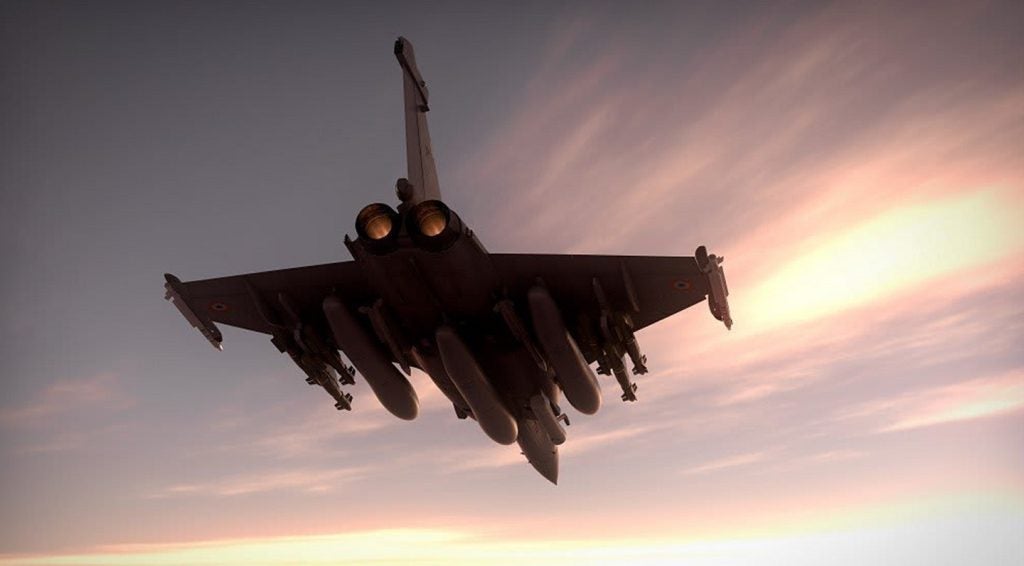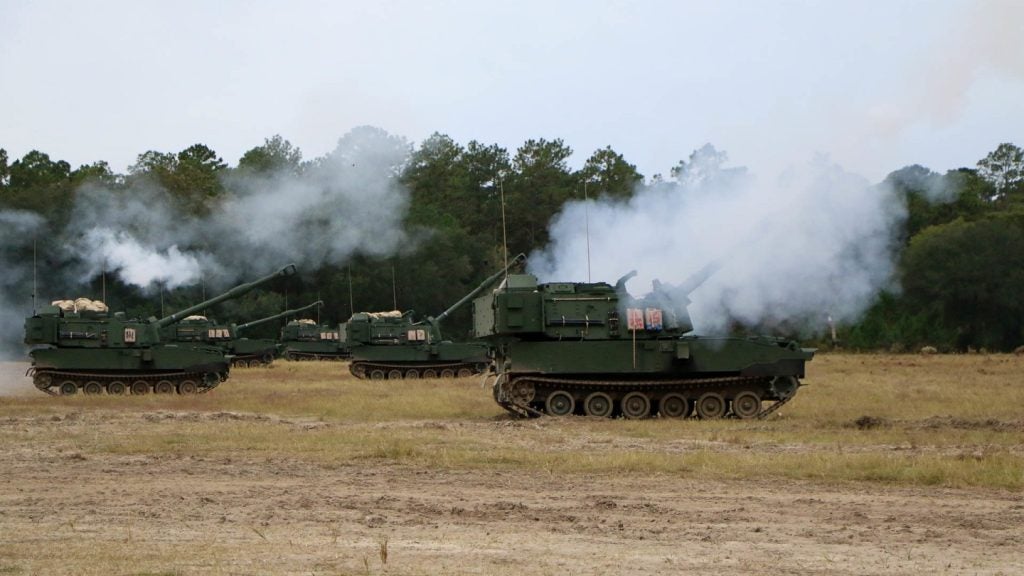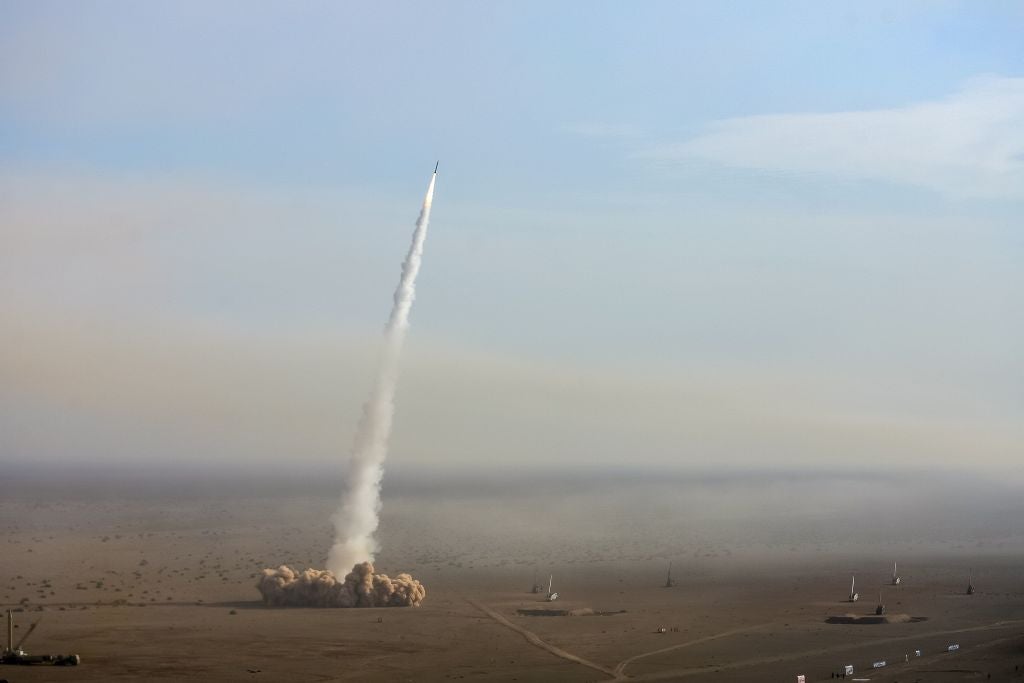
When it comes to international posturing, there are two major players. While it is true that China is the big emergent power, it has yet to make waves in the oceans of international diplomacy in quite the same way as the US and Russia who secure the top spots.
This pair has a turbulent history in international relations that stretches back as far as the Russian Revolution of 1917. But more recently they have appeared to have re-engaged following US intentions to build their missile defence shield in Eastern Europe – right on Russia’s doorstep. And, on 27 September came news that Russia too has plans to build a missile defence shields in a sharp escalation in military rhetoric.
The US claims that its not all about the Russians, but about facing the burgeoning threat from the so-called ‘rogue nations’. And, while Russia and China do have the most advanced strategic arsenals, the US might be right in arguing that it is the rogue nations – Iran, North Korea and Syria – that are of the most immediate threat to Western interests.
To overlook the political dogma attached to missile defence would, however, be an oversight. According to Dr Dan Plesch – Director of the Centre for International Studies and Diplomacy at the University of London’s SOAS (School of Oriental and African Studies) – there are aspects of missile defence that have been almost entirely overlooked by the world at large. Chief among these is the tactical and strategic use of US counter missiles and counter air capabilities.
The US missile defence shield
For almost a decade, billions upon billions of dollars have been poured into missile defence, particularly by the US, which is now estimated to have an annual spend of around $10bn a year. With anti-missile interceptor sites in Alaska and California, the new base in Poland is the culmination of years of planning for the European segment of the missile shield.
How well do you really know your competitors?
Access the most comprehensive Company Profiles on the market, powered by GlobalData. Save hours of research. Gain competitive edge.

Thank you!
Your download email will arrive shortly
Not ready to buy yet? Download a free sample
We are confident about the unique quality of our Company Profiles. However, we want you to make the most beneficial decision for your business, so we offer a free sample that you can download by submitting the below form
By GlobalDataThe deal will see a silo of ten interceptor missiles located on Poland’s Baltic coast, just 115 miles from the Russian border. For their part, the Poles have secured a battery of Patriot missiles to be permanently based on Polish territory, which may go some way to allay fears of Russian reprisals. Alongside the interceptors, a radar station is planned for construction south west of Prague in the Czech Republic. The UK also plays a part as RAF Fylingdales, the early warning facility in North Yorkshire, is likely to be linked to help track incoming ballistic missiles. The US electronic surveillance base at Menwith Hill, eight miles west of the Yorkshire town of Harrogate, will also be key part of the shield system.
Underlying international rifts
The US announcement to build a missile base in Poland caused a diplomatic row reminiscent of the cold war days. Moscow accused the US of using the shield to build a ring of steel around Russia and undermine its strategic nuclear deterrent.
The US countered by saying such claims were pure paranoia with US Secretary of State Condoleezza Rice reinforcing the American line that this was purely about defence. “This is an agreement that will establish a missile defence site here in Poland that will help us to deal with long-range missiles from countries like Iran or North Korea,” she stated publicly.
Coming just a week after the Russian-US power play in Georgia it is not all that surprising that the deal was viewed with some suspicion. However, it has long been US policy to have a base in Europe.
Whether this is to counter the threat from the Middle East, or to expand interests in Eastern Europe, it is a moot point.
This is the key part of the problem, says Plesch. He highlights the US strategic mission as one of the principle reasons for the current instability. The location of the missile shield in Poland and the Czech Republic flexes considerable political power, and the ability of the one real world superpowers to do more or less what it wants, without the say so of Nato or any other institution.
Plesch also points a finger at the US tactical mission for missile defence, at what he calls the classic sword and shield model. Western military training includes missile defence in offensive counter air operations – the bulk of which are carried out under the auspices of offensive forces. Something guaranteed to send out mixed messages.
If the Russians fear that they can no longer ride out a US pre-emptive strike and still hit the US with nuclear missiles, they will be put in the classic ‘use them or lose them’ dilemma in any crisis. In a world where the US and Russia are now face-to-face from the Baltic to Central Asia, and both sides can launch strategic nuclear forces in under an hour, such a crisis is becoming a more realistic possibility.
Sea-based missile defence
Regardless of the implications for international relations, the development of the missile defence shield gives the US a significant step up against the proliferating nations by raising the bar in its defence capabilities. However, there are other options open to the Americans.
At a recent conference in the US, questions were posed regarding sea-based missile defences, asking whether more emphasis should be placed on them because of their operational and political flexibility.
Certainly the US Aegis platform has a strong track record in intercepting short and medium-range missiles. Since 1999 the Aegis ballistic missile defence (BMD) system has made 11 intercepts out of 13 attempts. Since 2005, the platform has performed successful testing of sea-based intercepts including tracking multiple targets, intercepting targets where the warhead was separating from the booster and engaged with ballistic missile and cruise missile targets.
The combination of land and sea-based capabilities undoubtedly adds to the layers of defence necessary to counter any threat. Six strategically deployed Aegis BMD ships could cover a substantial proportion of Europe. Four could neutralise the threat from Iran.
They can also be used to provide additional sensor and track data for ground interceptors, located in places like Poland. Future development of the SM-3 block 11A missile could also significantly change the operational picture – with its planned capability to target a range of missiles, from short and medium range right through to some intercontinental ballistic missiles.
In addition, US allies are also keen on getting involved with Aegis as it being much more politically sensitive to share research on a sea-based programme than make grandstanding gestures along the lines of locating a missile base on your territory.
Global security meltdown
According to Plesch, the parallels between fiscal policy and security policy are there for all to see. In the same way that those who warned that a global financial meltdown were overlooked, some concerned with the perils of western security policy are too being ignored. “Anyone failing to notice,” he says, “should be checked into the asylum.”
The Russians tabled a paper earlier this year, proposing a new security treaty for Europe that didn’t even register with the Western press. However, the idea has not gone away, re-emerging recently when Russian Foreign Minister Sergei Lavrov told the UN General Assembly that the “existing architecture of security in Europe did not pass the strength test in recent events.”
The Russian warnings should not be ignored, says Plesch. He highlights the very real danger that overlooking fears the Russian’s may have, particularly against a perceived backdrop of continued US dogmatism.
The Bush administration has undoubtedly been the main driver behind missile defence so far and this seems set to continue with future administrations with presidential nominees John McCain and Barack Obama both making supportive noises. Republican McCain in particular has quoted missile defence as being critical to the protection of the US from adversaries such as North Korea and Iran, and as a hedge against potential threats from Russia and China.
The global financial crisis may yet have a part to play in missile defence. A major economic implosion might just lead towards a strategic rapprochement as other priorities become more pressing. In the meantime, more Russian ships make their way to Syria as they seek to get more of a foothold in the Mediterranean and the US continues unchecked with its defence shield capabilities.






